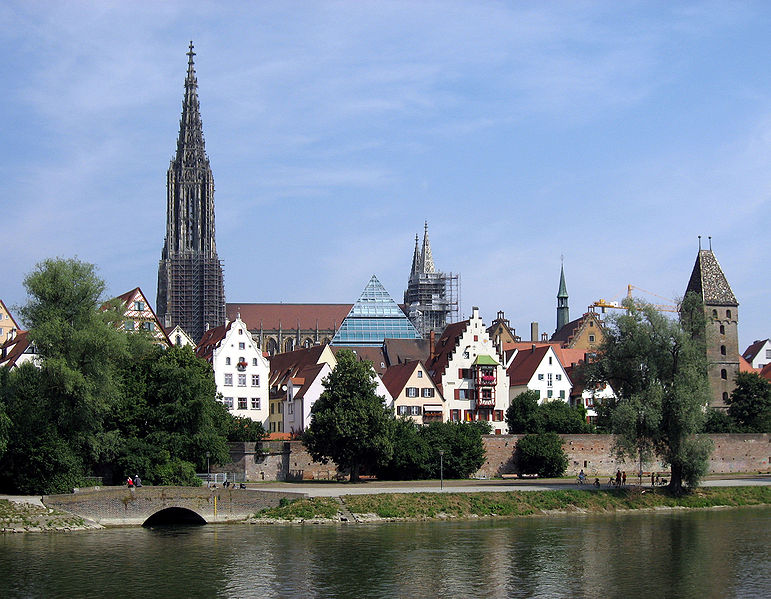ULM (ulm)
A
city in the federal German state of Baden-Wurttemberg
Common
clues: Einstein's birthplace; City on the Danube; Danube city;
Einstein's hometown; German cathedral city
Crossword
puzzle frequency:
once a year
Frequency
in English language:
49945 / 86800
Video: Ulm,
Germany
Ulm is a city in the federal German state of Baden-Württemberg, situated on the River Danube. The city, whose population is estimated at 120,000 (2006), forms an urban district of its own (German: Stadtkreis) and is the administrative seat of the Alb-Donau district. Ulm, founded around 850, is rich in history and traditions as a former Free Imperial City (German: freie Reichsstadt). Today, it is an economic centre due to its varied industries, and it is the seat of a university (University of Ulm, founded in 1967). Internationally, Ulm is primarily known for having the church with the tallest steeple in the world, the Gothic minster (Ulm Minster, German: Ulmer Münster) and as the birthplace of Albert Einstein.

Historic
Ulm Minster (German: Ulmer Münster, built 1377-1891) with the
world's highest church steeple (161.53 m (529.95 ft) high and 768
steps). Choir stalls by Jörg Syrlin the Elder (1469–74),
famous sculpture Schmerzensmann (Man of Sorrows) by Hans Multscher
(1429).
The
old Fischerviertel (fishermen's quarter) on the River Blau, with
half-timbered houses, cobblestone streets, and picturesque
footbridges. Interesting sights here are the Schiefes Haus(crooked
house), a 16th-century house today used as a hotel, and the Alte
Münz (Old Mint), a mediæval building extended in the
16th and 17th centuries in Renaissance style.
The
remaining section of the city walls, along the river, with the
14th-century Metzgerturm (butchers' tower) (36 m (118.11 ft)
high).
The
Rathaus (Town Hall), built in 1370, featuring some
brilliantly-coloured murals dating from the mid-16th century. On
the gable is an astronomical clock dating from 1520. Restored
after serious damage in 1944. Photos of the Rathaus can be seen at
this commercial travel site.
The
Krone inn, a medieval complex of several houses (15th / 16th
century, extensions from 19th century), where German kings and
emperors were accommodated during their travels.
Several
large buildings from the late Middle Ages / renaissance used for
various purposes (especially storage of food and weapons), e.g.
Schwörhaus, Kornhaus, Salzstadel, Büchsenstadel,
Zeughaus, Neuer Bau.
Ulm
Federal Fortifications are the largest preserved fortifications
and were built form 1842-1859 to protect from attacks by France.
The historic district Auf dem Kreuz, a residential area with many buildings from before 1700.
Wiblingen Abbey, a former benedictine abbey in the suburb of Wiblingen in the south of Ulm. The church shows characteristics of late baroque and early classicism. Its library is a masterpiece of rococo.
This article is licensed under the GNU Free Documentation License. It uses material from the Wikipedia article "Ulm".
|
|